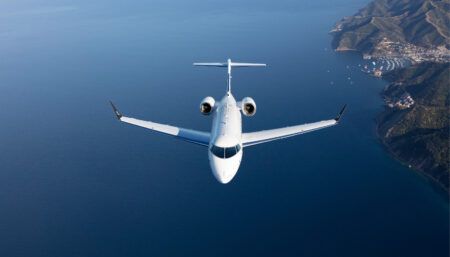Ascend by Cirium has published the new Cirium Fleet Forecast, predicting demand for approximately 44,500 new aircraft globally – worth US$2.9tn – over the next 20 years.
The forecast published by Ascend by Cirium, the consultancy arm of aviation analytics firm Cirium, is an independent forecast of the global passenger and freighter market for the next 20 years.
Global aviation activity is predicted to reach 2019 levels in October 2023.
“The new Cirium Fleet Forecast shows a positive long-term outlook for aviation,” said Rob Morris, Ascend by Cirium’s global head of consultancy. “The industry is undergoing structural changes, but remains on course to return to traditional growth paths by 2025. The global passenger fleet will be required to increase by around 22,000 aircraft to service passenger traffic, which we predict to grow 3.6% annually to reach 47,700 aircraft by the end of 2041. These new aircraft will be required to meet demand for air travel, but also to replace less efficient, older-generation types.”
The company noted Asia-Pacific remains the key growth region for new deliveries, driven by China. The country is forecast to have the highest annual passenger traffic growth rate at over 6% and account for 19% of deliveries in 2041, ahead of all other Asia-Pacific countries, with a combined share of 22%.
North American and European airlines are projected to account for 21% and 17% of deliveries respectively. Middle East airlines are projected to take 7% of deliveries, accounting for 14% in value terms due to the mix of twin-aisle deliveries.
Ascend by Cirium said that at the end of November 2022, the single-aisle fleet was within 2% of 2019 levels, but twin-aisle aircraft numbers were still down by 20%. The forecast predicts the single-aisle fleet will grow faster by 3.7% annually, against 3.2% for twin-aisles; and the regional aircraft fleet will rise more modestly, by 1.1% a year, with the turboprop fleet set to grow at a faster rate within the regional sector.
Forecast traffic growth over the long term will require the global passenger fleet to increase by around 22,000 aircraft, which equates to a 3.1% annual growth rate, taking the inventory to some 47,700 aircraft at the end of 2041.
The in-service passenger fleet is not forecast to return to 2019 levels until mid-2023, thus effectively losing up to four years of ‘normal’ fleet growth.
Close to 88% of the current passenger fleet is forecast to be retired from passenger service during the next 20 years; and approximately 70% of the current freighter fleet is forecast to be retired by 2041.
The report notes that overall, there will be some 19,000 retirements from the end-2021 passenger fleet, plus a further 2,500 aircraft that leave the passenger fleet via cargo conversion.





